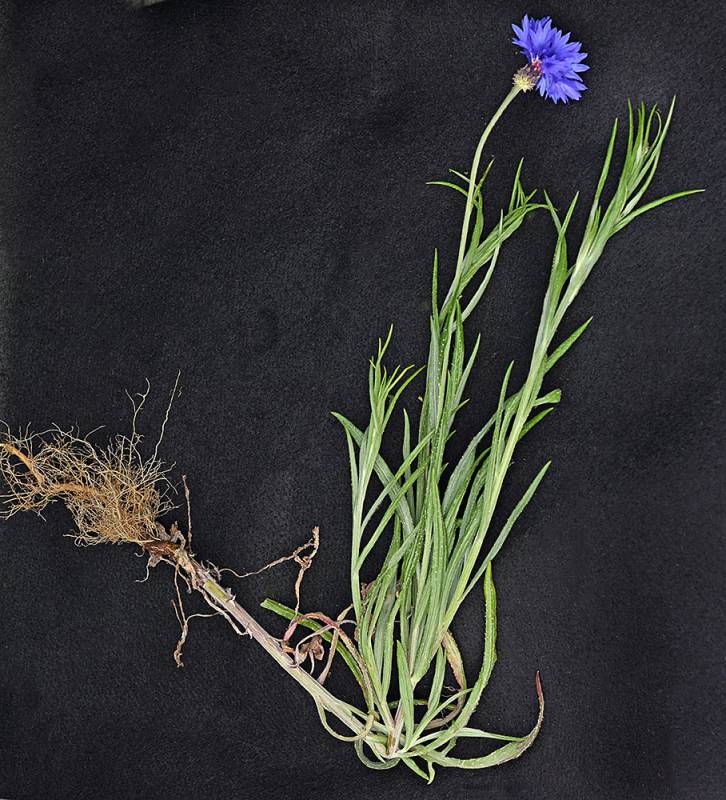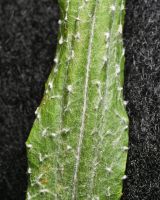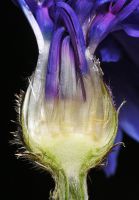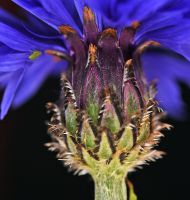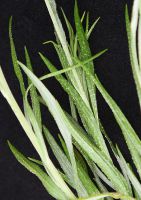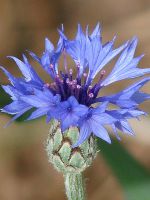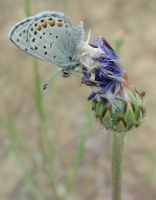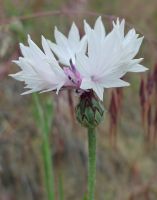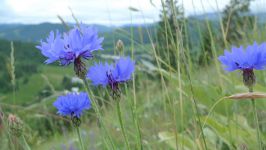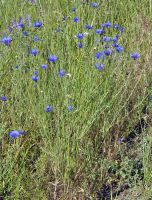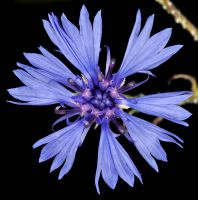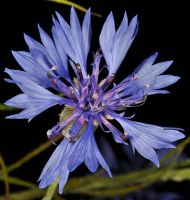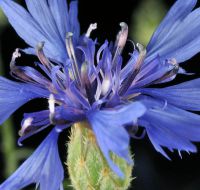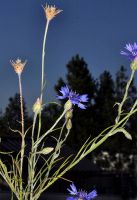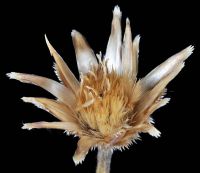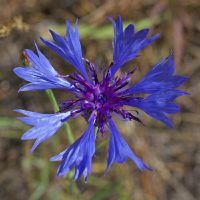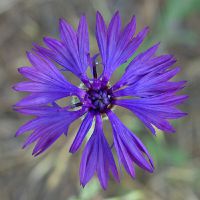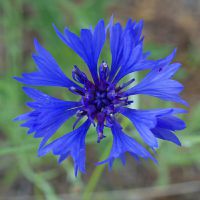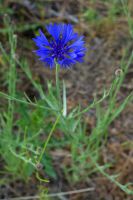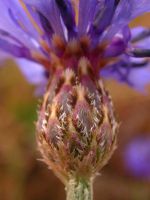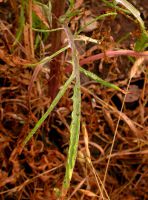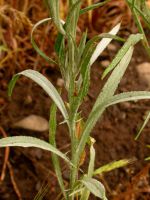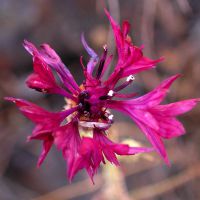Distribution: Occurring on both sides of the Cascades crest in Washington; Alaska to California, east to the Atlantic Coast.
Habitat: Roadsides, fields, ditches, meadows, wastelots, and other disturbed open areas at low elevations.
Flowers: May-October
Origin: Introduced from the Mediterranean region
Growth Duration: Annual
Conservation Status: Not of concern
Pollination: Bees, flies, beetles, wasps
Annual or winter-annual, 2-12 dm. tall.
Leaves narrow, often linear, mostly entire, or the lower ones sometimes shallowly toothed or lobed, up to 13 cm. long and 1 cm. wide, excluding the lobes.
Heads terminating the branches; involucre 11-16 mm. high, its bracts with a narrow, dark lacerate fringe near the tip; flowers usually blue, but may be white, pink, or purple, the marginal ones with enlarged, irregular corollas; pappus bristles 2-3 mm. long; receptacle densely bristly.
Publication: Sp. Pl. 2: 911. 1753.
PNW Herbaria: Specimen records of Centaurea cyanus in the Consortium of Pacific Northwest Herbaria database.
WA Flora Checklist: Centaurea cyanus checklist entry.
OregonFlora: Centaurea cyanus information.
E-Flora BC: Centaurea cyanus atlas page.
CalPhotos: Centaurea cyanus photos.
USDA Plants: Centaurea cyanus information.



